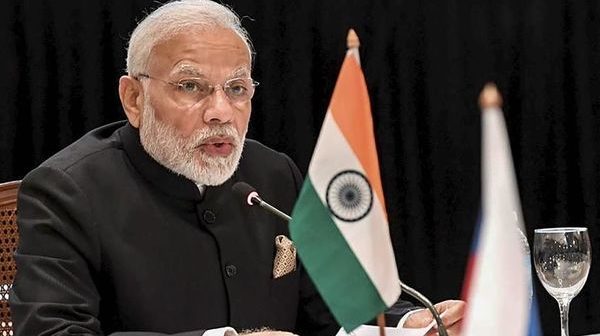(HT)
India and the US said on Monday that they have made “significant progress” in negotiations for a bilateral trade agreement even as Prime Minister Narendra Modi and vice president JD Vance discussed ways to bolster cooperation in energy, defence and strategic technologies.
The talks for the first tranche of a trade deal, focused on issues such as tariffs and market access, and cooperation within the framework of the bilateral comprehensive global strategic partnership figured in a meeting between Modi and Vance at the prime minister’s official residence on Monday evening.
Modi hosted Vance, Second Lady Usha Vance and their children – sons Ewan and Vivek and daughter Mirabel – for a dinner that was also attended by Cabinet ministers. Vance’s first visit to India came against the backdrop of bilateral consultations on the trade deal, which moved into high gear after President Donald Trump paused customised reciprocal tariffs that he had imposed on some 60 countries, including India, till July.
Modi and Vance welcomed “significant progress” in negotiations for a mutually beneficial India-US bilateral trade agreement focused on the welfare of the people of the two countries and job creation, the two sides said in separate statements after the meeting, which was also attended by external affairs minister S Jaishankar and National Security Adviser Ajit Doval.
Modi said in a social media post that he and Vance “reviewed the fast-paced progress following my visit to the US and meeting with President Trump”. He added, “We are committed to mutually beneficial cooperation, including in trade, technology, defence, energy and people-to-people exchanges.”
The India-US comprehensive global strategic partnership, Modi said, will be a “defining partnership of the 21st Century for a better future of our people and the world”. The Indian readout, without giving details, said the two leaders “noted continued efforts towards enhancing cooperation in energy, defence, strategic technologies and other areas”. They also “reviewed and positively assessed” progress in various areas of bilateral cooperation.
The US statement said the proposed trade deal is an “opportunity to negotiate a new and modern trade agreement focused on promoting job creation and citizen well-being in both countries, with the goal of enhancing bilateral trade and supply chain integration in a balanced and mutually beneficial manner”. The two sides are guided by their visions of “Amrit Kaal” for India and “Golden Age” for the US, and the deal will create opportunities of growth for workers, farmers and entrepreneurs in both countries, it said.
Modi and Vance, who last met on the margins of the AI Action Summit in Paris in February, also discussed various regional and global issues of mutual interest and “called for dialogue and diplomacy as the way forward”, the Indian readout said in an apparent reference to the conflicts in Ukraine and West Asia. The meeting was an opportunity for Vance to brief the Indian side on US efforts to end the Russia-Ukraine war and the Israel-Hamas conflict.
Modi recalled his visit to Washington in February and his “fruitful discussions” with Trump, which resulted in a road map for close cooperation between India and the US that leverages the “strengths of Make America Great Again (MAGA) and Viksit Bharat 2047”, the Indian readout said.
India and the US set a target for more than doubling two-way trade to $500 billion by 2030 during Modi’s visit in February, and they also agreed to finalise the first tranche of a mutually beneficial, multi-sector bilateral trade agreement by the fall of 2025 to deepen trade in goods and services, increase market access, reduce tariff and non-tariff barriers and deepen supply chain integration. They also launched the India-US COMPACT (Catalysing Opportunities for Military Partnership, Accelerated Commerce & Technology) initiative.
Negotiations on the trade deal gained pace after Trump imposed the so-called “Liberation Day” reciprocal tariffs on some 60 countries, including levies of 26% on India, on April 2. Trump subsequently paused tariffs for all countries, except China, for 90 days.
US deputy trade representative Brendan Lynch visited India in March to finalise the terms of reference or contours of the trade deal. An Indian team of negotiators will travel to the US from April 23 to talks on an interim agreement, with the focus on finalising an arrangement within the 90-day period during which Trump has paused his reciprocal tariffs, people familiar with the matter said on condition of anonymity.
The US statement acknowledged the finalisation of terms of reference for the negotiations, saying it created a road map for further discussions on shared economic priorities.





